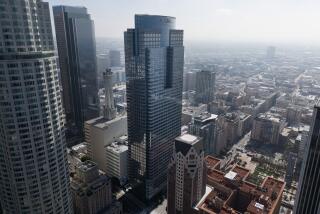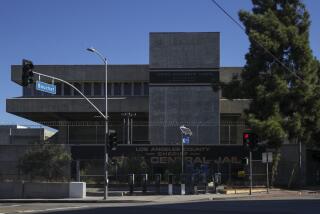University Suit Unlikely Over Garage Collapse : Quake: Engineering study of failed Cal State Northridge structure doesn’t offer grounds for litigation, officials say.
- Share via
Cal State Northridge officials probably will not file a lawsuit over the spectacular collapse of a university parking garage in last year’s Northridge earthquake.
A review of the first phase of an engineering post-mortem on the structure’s failure “appears to suggest that there will be no litigation,” said Bruce Richardson, deputy general counsel for the California State University system.
“There’s nothing in the report that leaps up and says these guys (builders or designers) were woefully negligent in what they did,” Richardson said.
The university on Friday released an initial report by Dames & Moore, consulting engineers, on the failure of the $11.3-million parking structure.
The garage became an icon of the quake’s destructive power, triggering anxious musings about the destruction of cars and lives had the temblor not struck in the wee hours of a holiday.
The Dames & Moore report, is dated Dec. 12, but was withheld by school officials until Friday.
Although not final, “the decision at the moment is not to go forward with any kind of (legal) action,” Richardson said. Andrew Curd, president of A. T. Curd Constructors, which built the garage in 1990-91, said Friday that he has believed all along there are no grounds for litigation.
“The design basically met or exceeded code,” Curd said. “I think . . . the ground motion just wildly exceeded the codes.”
The quake and its aftershocks left the five-level, four-acre structure in collapse or incipient collapse over about 50% of its area, according to the report.
Either columns failed or beams were dislodged and dropped, causing attached slabs to drop and pull other beams, slabs and columns down, the report said.
The 115-page report concludes that the remaining sections of the garage should be razed. Dames & Moore is still preparing a detailed analysis on the causes of the collapse, said Allan R. Porush, a structural engineer and project manager for Dames & Moore.
While declining to give details, Porush said the second report is likely to fix blame more in “shades of gray . . . than black and white.”
*
But Porush said he “may make negative statements about the design-and-build process” used in constructing the garage--which critics say eliminates a vital check.
In design-build projects, a single firm controls both functions, with the designer answering to the builder rather than to the building owner.
“I am an adamant nonbeliever in design-build,” Porush said. “You may get a cheaper product, but you do not get the same value.
“Parking structures generally in the Northridge earthquake . . . did very poorly . . . because of the design-build process,” Porush said.
Litigation over the collapse could prove embarrassing to university officials because in a dispute over the adequacy of the design they sided with the builder over their own consultants.
The firm, Esgil Corp., had been hired to assure that construction plans conformed with building codes.
As The Times reported in February, during construction in August, 1990, Esgil voiced strong misgivings about the structure’s ability to absorb the seismic forces the builder claimed it would.
In essence, the consultants said that in calculating compliance with the building code, Curd claimed a higher value for the structure’s ability to flex with seismic stress than the design warranted.
University officials sided with Curd after it provided letters from several engineering firms supporting its interpretation of the building code.
More to Read
Sign up for Essential California
The most important California stories and recommendations in your inbox every morning.
You may occasionally receive promotional content from the Los Angeles Times.










